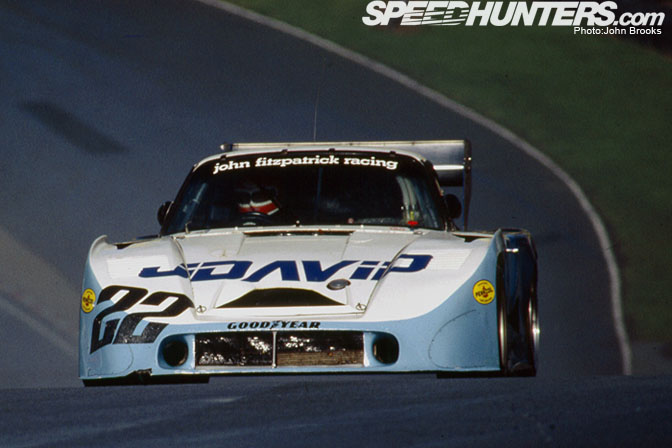

Wow this 935 feature is turning into quite the epic Speedhunters article…. I originally only planned for it to be a single entry but have had to break it out into two pieces; it keeps ballooning in size. You can tell I just love these cars huh?
As I write this article, I’m sitting on a plane, flying from San Francisco back to Vancouver, having spent the last few days at the Formula Drift Sonoma round. I have to say it’s always a great pleasure to attend a Formula Drift event; wild automotive mayhem, great people and good music, what more could you ask for?
Anyway back to the subject at hand… we left off the story of the Porsche 935 with the coming of the privateers and the era of the specials.
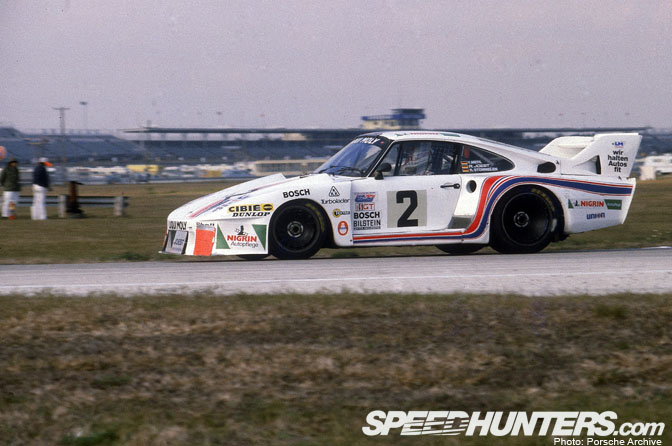
The 1980 season started out with the Joest team taking overall honours at the 24 Hours of Daytona with their own take on the 935, called the 935J. You may know the Joest team from their successes with the Audi R8s and R10s at Le Mans, the ALMS and now with the LMES. Back in 1980 though, Reinhold Joest also chose to pilot his team’s cars too.
Rather than develop their own aerodynamic concept like the Kremer Brothers with their K3 model, Joest chose to copy the bodywork from the 935/77. Why reinvent the wheel right? He also came up with his own air to air twin cylinder bank intercooler system to push reliable power figures for the 935 to new dizzying heights.
The day after winning Daytona, Joest sold the chassis to Gianpiero Moretti, the owner of Momo, and the car spent the rest of it’s days racing in the US IMSA series.
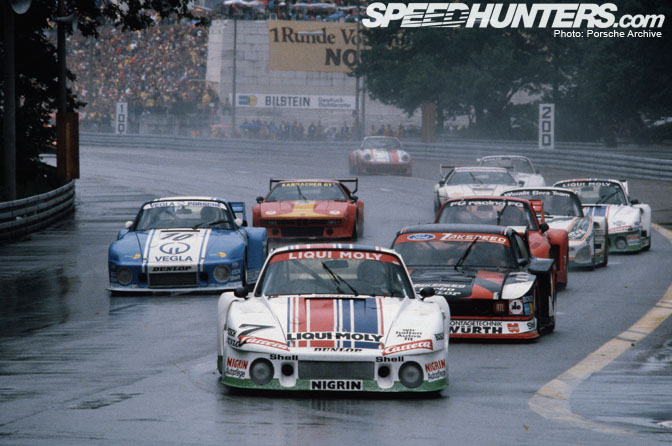
Here is shot of a newer Joest 935J leading the field at the start of the 1980 Norisring trophy race. These days the Norisring race is part of the DTM series for crazy Audi and Mercedes touring cars, but back then it was for GT cars.
This 935J was an evolution model which featured tube frame front and rear subframes joined to the main roll cage and a widened front track.
You’ll notice that looming behind the Liquid Moly car is a nasty looking Ford Capri run by the famous Zakspeed racing team. Another real favorite of mine, this car was one of the only Group 5 cars that regularly beat the Porsche 935s on pure race pace. We’ll look into this car another time… I wanted to try and visit the Zakspeed workshop on our Germany trip this past July, but we just didn’t have time to make it there…. anyway…. next time!
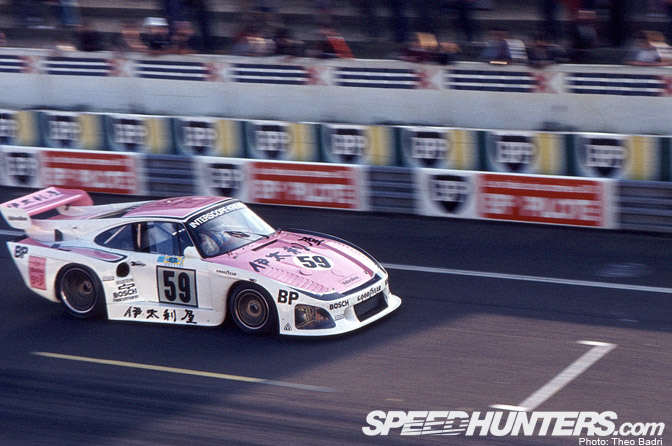
By the time 1981 rolled around, the K3 was THE car to have in GT racing around the world. The car was now developing a reliable 720 bhp at 1.3 bars of boost and had surpassed the performance marks set by the factory Moby a only few years earlier. The Kremer workshops ending up building 13 examples of the K3 and also helped to convert many of the older customer spec cars to the latest specifications.
This particular example is a K3/81 run by the Kremer team at Le Mans in 1981. This particular picture is my desktop background on my laptop. Someone from EA Japan noticed this when we were travelling in Japan last month and said the main sponsor logo is from a Japan-based Italian restaurant!…
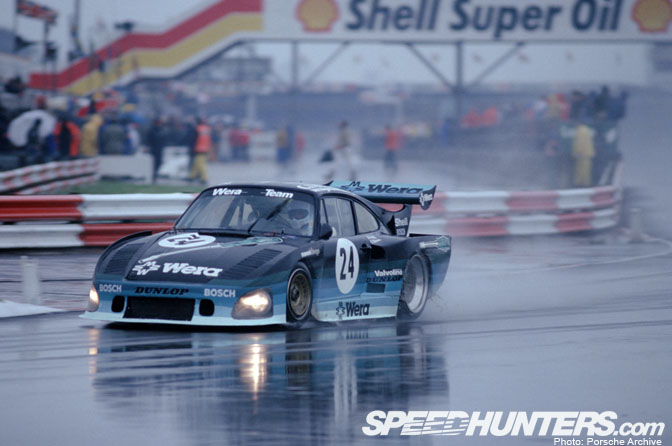
Here’s the Weralit K3 running in the wet at Silverstone in 1981 on it’s way to fifth overall … I don’t have much else to say other than I think it’s a great photo! Agree?
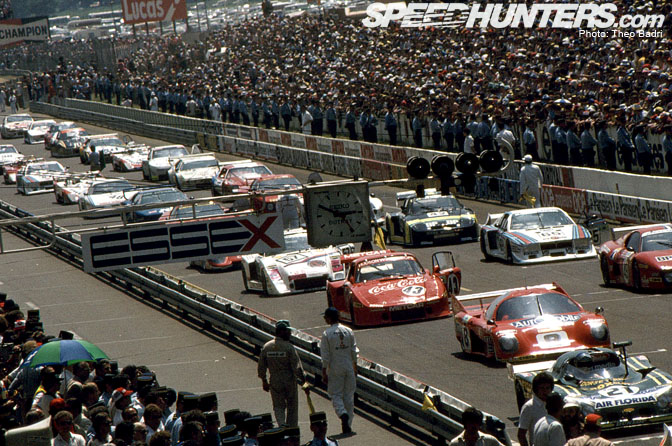
Check out the field of Group 5 cars on the grid for the 1981 Le Mans 24 Hours. Ahh if only I could time travel back to this era. This was really the last year the Group 5 cars had a shot at taking the overall wins in a European sports car race like Le Mans. The next year would see the coming of the full factory Group C cars like the Porsche 956 which moved the bar along considerably. None the less, the 935 continued to evolve into some truly wild race cars; machines that pushed the boundary of what could be considered a true GT car.

By 1981 the American teams had been running the 935s for a few years and a few enterprising builders and teams started to create their own special versions of the car. Chassis 930 890 0013 started life as one of the main Kremer Brothers 935s and was campaigned very successfully the 1978 German DRM championship by a certain Bob Wolleck. The car was sold to the states in 1980 and was rebuilt by the Andial group in California with one of their special 3.2L engines and custom “M16” bodywork.
The 935 won a hat trick of IMSA races in 1981: Mosport, Road America, and Mid Ohio at the hands of Harold Grohs, Rolf Strommelen and late Derek Bell. It was featured in the film “The Red Mist Stuff” which is a must see film for hardcore 935 fans….
Check the ground effects skirts behind the rear wheels… It’s an early form of the rear diffuser.
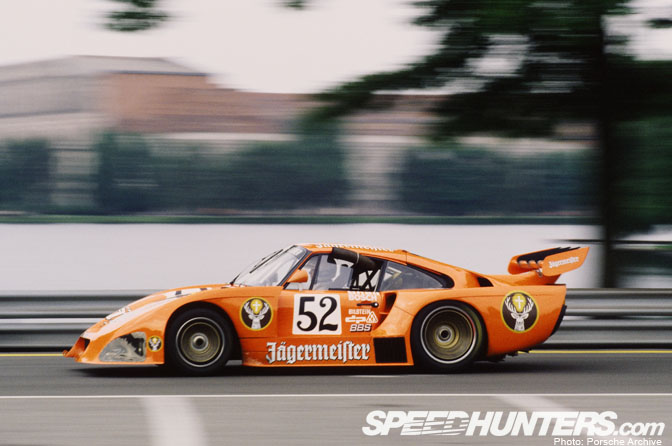
Not content to sit on their laurels, the Kremer Brothers introduced their evolution of the K3 in 1981, aptly named the K4. This car featured their interpretation of many of the tricks first seen on the Moby D-i-c-k such as a full tube chassis and ultra low profile. The car was designed primarily for sprint races and featured high downforce body-work.
Of the two K4s chassis that were constructed; this version, K4/1 had a very successful career in Germany and the USA. A second chassis was sold to the Interscope team in the states but was never raced.
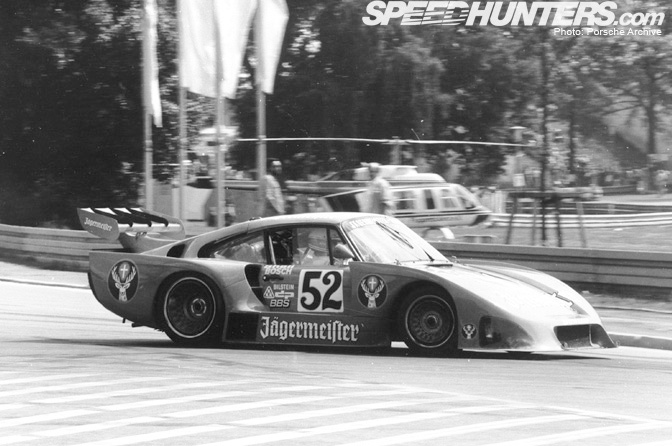
The K4 is one of my favorite 935 iterations.
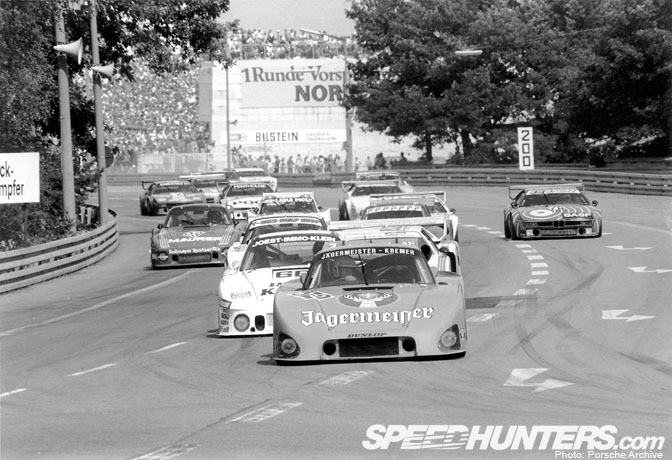
Here it leads the field as the start of the famous Norisring sprint race in ’81. Look at the size of the crowd in the background!
That year’s race was won by Hans Stuck’s crazy Group 5 spec 1000bhp Schnitzer built BMW M1 Turbo running just behind the Joest-Immo-Klein 935J.
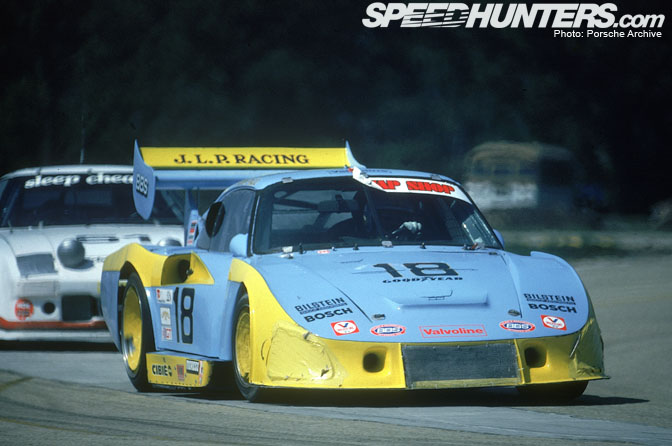
Another one-off 935 Special was the JLP-3 which had its competition debut at the Sebring 12 hours in 1981. It featured the roof from a 1972 911 (!) mated to a full tube chassis and K3 inspired bodiwork. Driven by the John Paul father and son team it went on to be one of their 1982 IMSA championship winning cars.
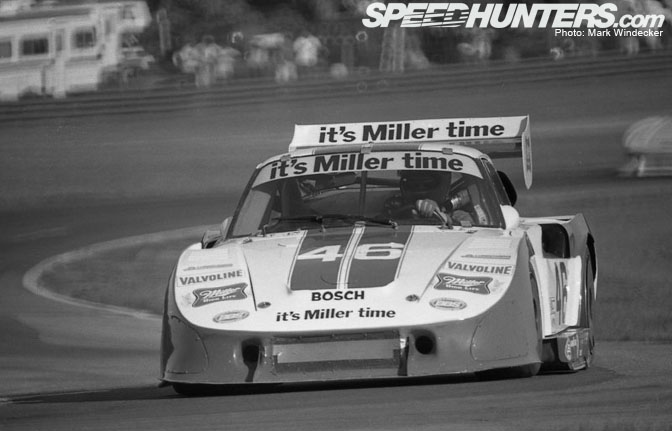
I’ve read that this car developed over 800 bhp in sprint trim. Imagine that! Here it is at Mid Ohio in 1982.
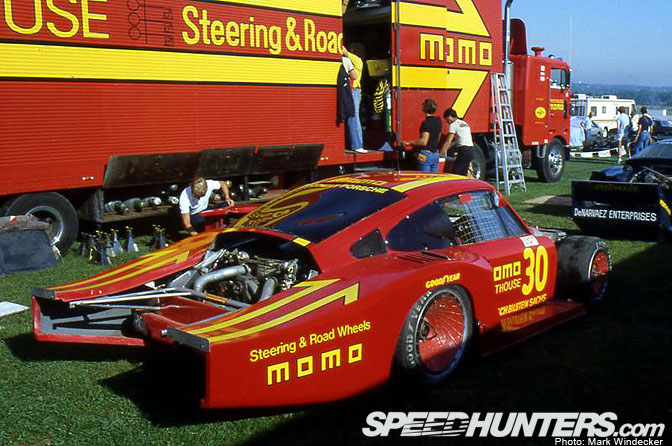
Not to be out-done by the Americans or the Kremer Brothers, the Joest team built up their own version of 935 wildness in 1981. Called the 935-78/81 it was a straight up replica of the Moby D-i-c-k of 1978 minus the trick water cooled engine.
The car debuted in the 1981 at the hands of Jochen Mass in the DRM series. It took podium positions in its first two outings and won its third race at Hockenheim on April 4th, 1981.
Word must have gotten to America, as the car was promptly bought by Gianpiero Moretti of Momo. He raced this car with reasonable success until the end of 1983.
Interestingly the car was restored a few years ago to it’s German DRM specification, in spite of the fact that the car spend most of it’s years with Momo sponsorship and red paint. Go figure!
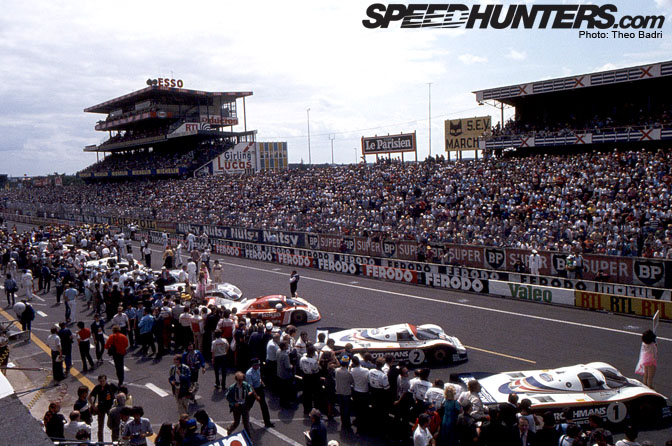
By 1982 the World Championship switched over to the new Group C formula. The Group 5 cars were supplanted by a new generation of sports Prototype cars such as the famous Rothmans Porsche 956. This snap from the the opening ceremony of Le Mans ’82 shows that all the top class cars were prototypes. Joest and Kremer even tried their hands at building their own Group C cars. The red and white car you see to the left of the number two Rothmans Porsche 956 is the Joest Porsche 936C. It had a reasonable World Championship season in ’82, and netted a few podium finishes before the car was replaced by a customer 956 chassis.
’82 was really the last year that Group 5 cars would run in any meaningful numbers in Europe, but there were still some fantastic new machines debuting as the 935 concept reached it’s final state of evolution.
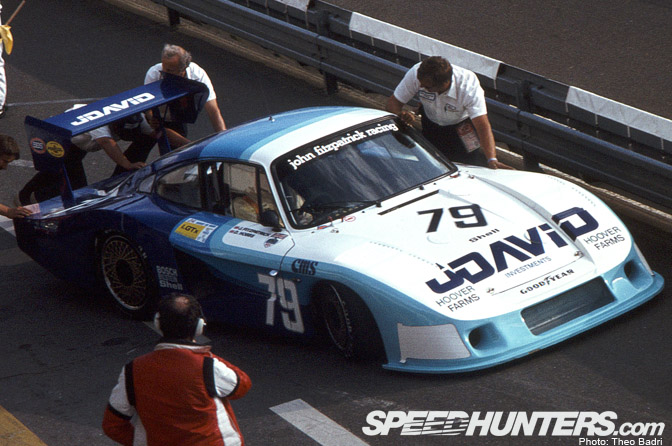
The last ever big European result for a 935 was at the ’82 Le Mans 24 hours with the second Joest 935-78/81 chassis. Run by Fitzpatrick Racing, it featured a special 2.6L endurance spec engine to work to the new Group C “consumption” rules introduced for that year. In it’s first race, the Moby replica won the Group 5 class, taking fourth overall.
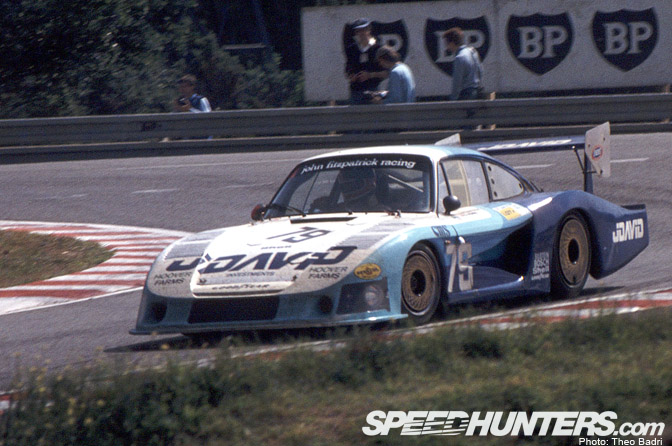
Sadly this chassis was completely destroyed at Riverside in 1983 when the rear wing failed at speed, pitching the car straight into the barriers, killing it’s driver, Rolf Strommelen. A sober reminder of the dangers of motor racing.

The Fitzpatrick racing sister car to the Joest Moby replica was none other than the Kremer K4. This was the same Jagermeister car seen above, but updated with new bodywork and underfloor ground effects. Perhaps Fitzpatrick was hedging his beats by having the latest offerings from both Joest and Kremer in his team?
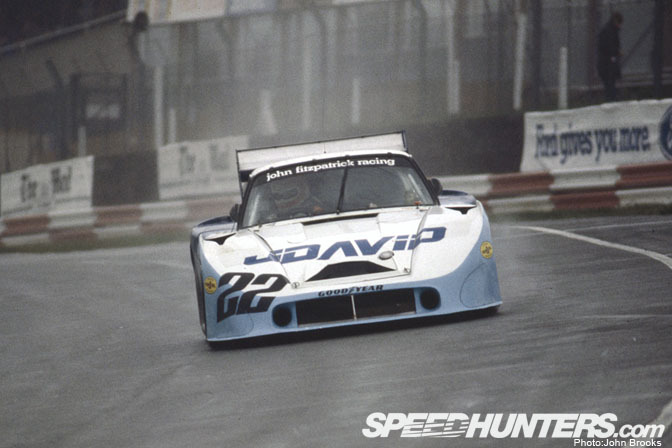
This car had a pretty successful racing career in the American IMSA series during 82 and 83 and saw off the threats of the newer sports prototypes cars many times.
In Oct 1982 Fitzpatrick took the K4 to the World Championship race at Brands Hatch to take on the might of the factory Rothmans Porsche and Martini Lancia teams. A young John Brooks was there that day with his camera to capture the action. No doubt he had Speedhunters in mind when he shot these images over 25 years ago!
The above image has been previously seen on Sportscarpros.com but the other two have never been published.
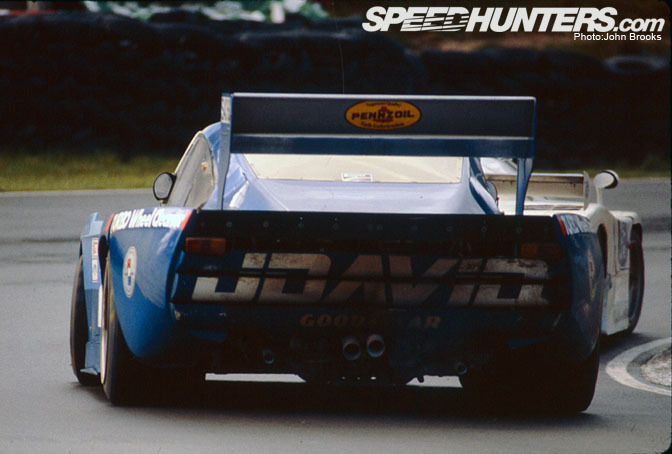
From the rear, you can see there isn’t much sign of a street 911 left…. The car was driven by Speed TV’s David Hobbs, John Fitzpatrick and Bob Wollek that day to a credible third place behind Jacky Ickx and Derek Bell’s Porsche 956 and Riccardo Patrese and Teo Fabi’s Lancia LC1.
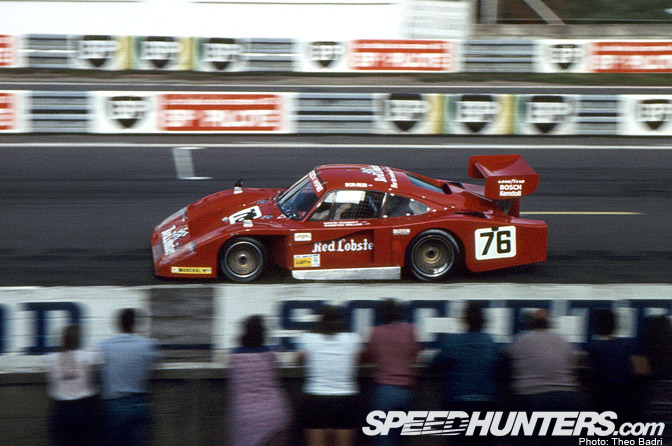
One of the more interesting 935 specials was Bob Akin’s L1. Seen here at it’s race debut at Le Mans ’82 it was unlike any other previous 935. The car featured a fully bonded and riveted monocoupe style chassis, giving more the appearance of a prototype style race car with a 935 roof more than any thing else.
The concept was to try and combine the proven reliability and power of the 935 engine package with the latest techniques from GTP prototype race car design. It was a good idea but the execution failed to live up to expectation.
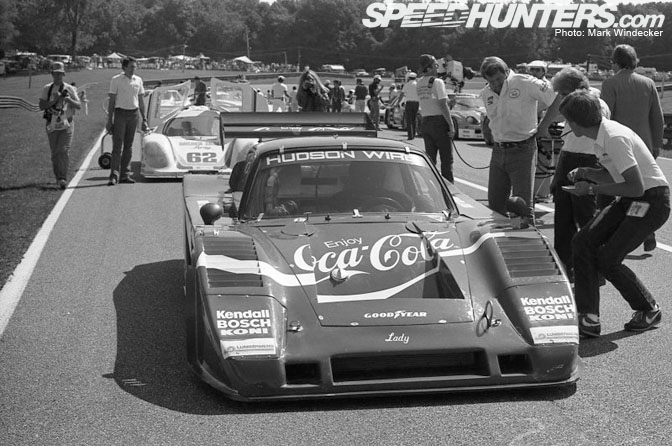
Here is the car on the grid at Mid Ohio in September of 1982. The car was designed to have as low a frontal area as possible, which resulted in a top speed advantage compared to its rivals. However the L1 suffered from very poor handling and was described as a “white knuckle ride” by any one who dared to race it.
The car was crashed at the year end Daytona finale race and sat unrepaired for more than 15 years until it was restored in the late ’90s.
To my eye it looks a bit freaky… a strange combination of GT and prototype elements.
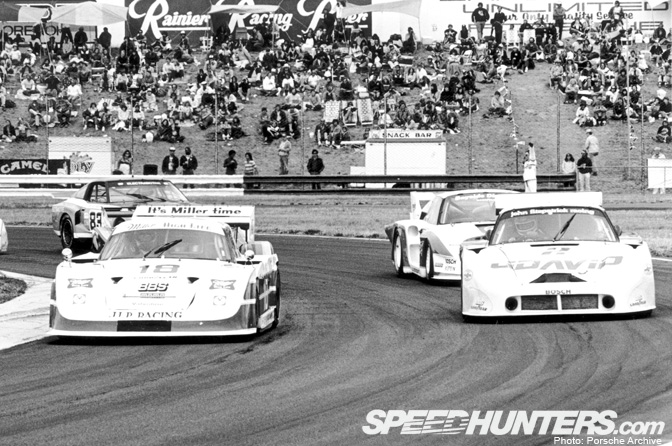
Throughout 1982 American IMSA racing season, the 935 was still the car to beat. The opening pace lap from the G.I. Joe’s Toyota Grand Prix at Portland International Raceway shows that the top two cars are 935 specials. On the right we have the Fitzpatrick racing Kremer K4 and on the left is perhaps the most radical 935 ever built: the JLP-4.
Designed by Lee Dykstra as a high downforce sprint car, it featured full ground effects venturi tunnels running the full length of the chassis along with an inboard coilover front suspension setup. The car only raced five times at the hands of the John Paul father/son team but won two of these races: Brainerd and Portland. Along with their JLP-3 endurance car and Lola T600, it took them to the 1982 IMSA Camel GT Championship.
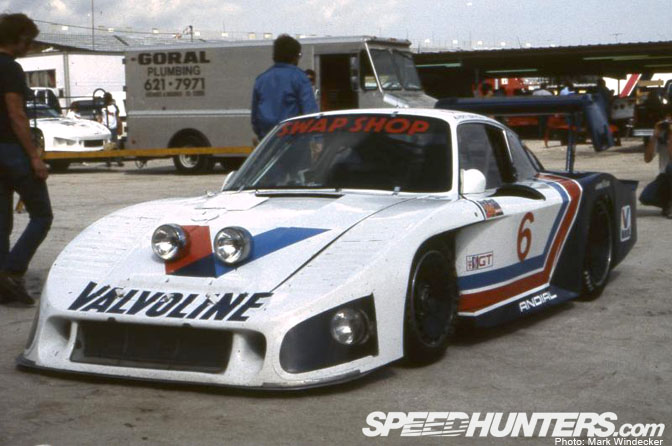
By ’83 the 935 was properly outdated, even in the American IMSA series. Manufacturers such as Lola and March were offering turnkey GTP machines sporting the latest thinking for mid engine prototype ground effects cars. However, few of these cars had the rock solid reliability that one could come to expect from the 935. It was still a good option for long distance races like Daytona and Sebring.
The 935L was a full tube frame car built by the Andial shop along the lines of the Moby D-i-c-k for team owner/driver Preston Henn. It won the 1983 Daytona 24hours piloted by Bob Wollek, AJ Foyt, Claude Ballot-Lena and Preston Henn.
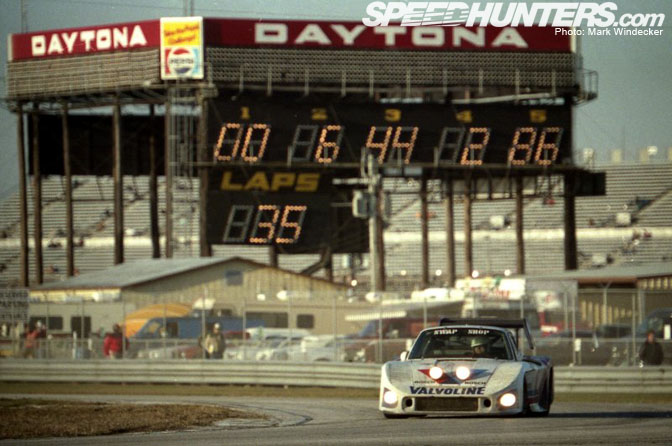
Pictured here in ’84 at Daytona it managed to take 2nd place overall, this time driven by AJ Foyt, Derek Bell and Bob Wollek. Not bad for an outdated design!
It also took third place at Sebring that year.
Great picture huh?
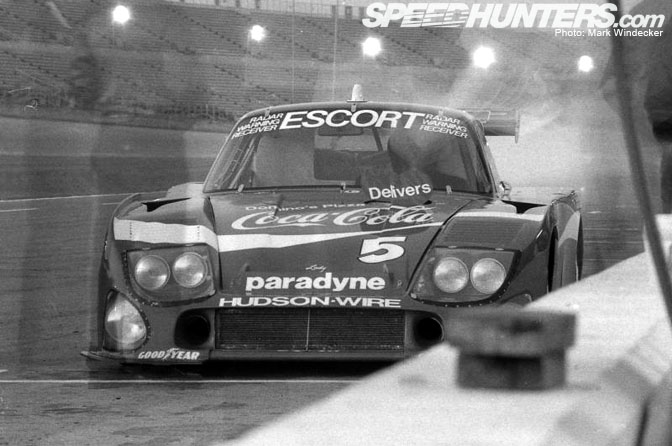
In 1983 Bob Atkin had a problem. His radical L1 car had been crashed at the ’82 IMSA finale at Daytona and was sitting in a heap in his shop. The solution was to bring out his old K3 for the ’83 IMSA season, but a new machine would be needed for ’84. He really wanted to get his hands on the revolutionary new Porsche 956 race car but IMSA had banned it, stating that it would need to be modified before being allowed to race in America. Porsche intended to create a special version of the 956 to run in IMSA, to be called the 962, but this was still some time away from being ready for customers.
So the solution was to build one last final evolution of the 935, incorporating all the lesson’s he had learned about these cars over the years. Dubbed the 935-84 it is now considered to be the last 935 ever built.
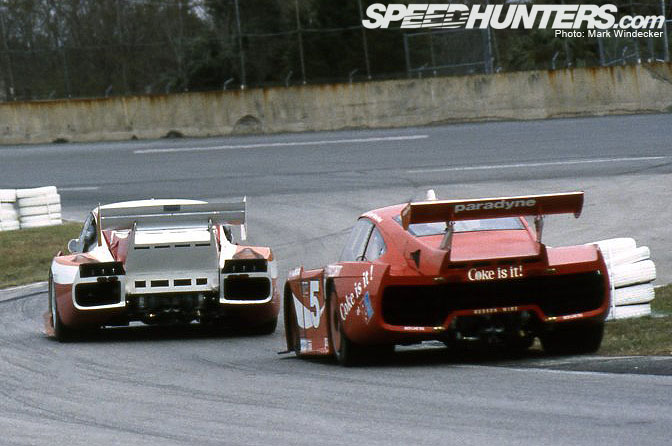
A full tube frame car, the bodywork has some similarities to the K3 and K4 models.
Developing an astounding 836 bhp in full race trim the car reached an incredible 213 mph on the Daytona banking in November 1983. For Daytona that’s well fast!
Seen here exiting the chicane at the 1984 Daytona 24 hours it failed to score a result that year. However it managed 5th place at Sebring a month or so later and backed up this performance with 5th overall at the 1985 Daytona 24H race.
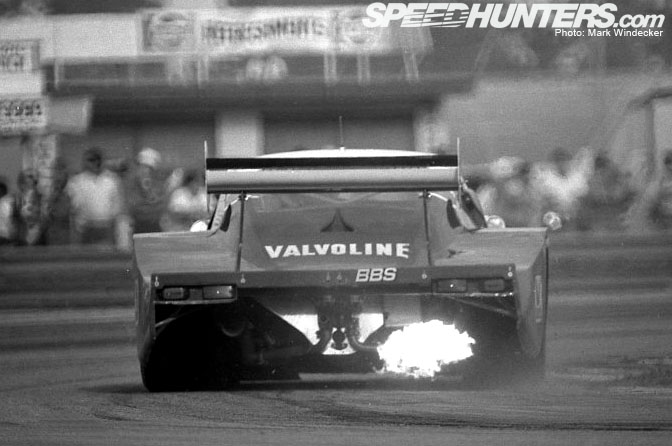
If you look at this picture of the Preston Henn 935L you can see there really isn’t much 911 left in this car. The 935 had evolved so far from what could be considered a GT car, it was the end of the line really. The time was ripe for the prototypes to take over to a new set of regulations: Group C for the World Championship and GTP for IMSA in America. It was to be the last golden era of international Sports Car racing before the curtain came down on the World Championship in 1992.
Special thanks to Mark Windecker for letting us use his vintage photos. If you want to see more of his shots from this era check out his photography pages.
We’d also like to thank Porsche again for access to their photo archive and to Theo Badri for continuing to allow us to feature his special Le Mans photos.
If you are interested in learning more about the 935 I’d highly recommend you try and find a copy of this book: 930 to 935: The Turbo Porsches by John Starkey. It contains everything you could ever want to learn about the Porsche 935.
Phew!
:Rod Chong






Awesome read...dang that's a lot of material you covered.
nice!
take a look on skoda 130 RS A5 - very similar concept...
I think that could have been way longer :p
I´m just in love. Can you guys please make a wallpaper from the 935
Nice Rod... I used to own the 935-84 you have pictured. Have lots of photos of the car in trim and with all the panels removed. Shoot me an email if you would like some photos.
Haha , Van you've found the way to this great thread , i was wondering how long it will take !
@ ROD : Okey man , you get me , tell me your price , and i'll pay.
Hoooo , damn ! September finsh a 30th and not a 31th !
Awesome Rod. It's been a great month.
terrific coverage!!!
Awsome page. i did attend allot of Gruppe5 races back then . its still the most awesome era i can remember. i was a BMW 320 Turbo fan and as a driver i remember Harald Ertl being my favourite.
kZ1bw6 http://huehbhibygdh.com/">huehbhibygdh, [url=http://yptuqmhbrruc.com/yptuqmhbrruc/url], [link=http://okidiaofxoix.com/okidiaofxoix/link], http://bpwsiosckmtk.com/
John Fitzpackrick's 935 won the IMSA GTX class at lemans in 82. The GTX class was a bit more liberal and allowed things such as the full width doors.
[View:http://www.youtube.com/watch?v=KXLs7XDtmAU] I know, I know.... I'm a bit obsessed with Porsche
I find at most big racing events, the bits of car culture you see in the paddock and spectator areas
Every so often we receive emails from young people asking for advice in their careers. How does one become
Great article
Great article Rod. I've read it twice now! Love these cars. I'm a little too young to have see them race (born in '83) but initially learned about them from my dad.......my parents have quite a few photos of them racing in Portland back in the day.
Keep up the good work!